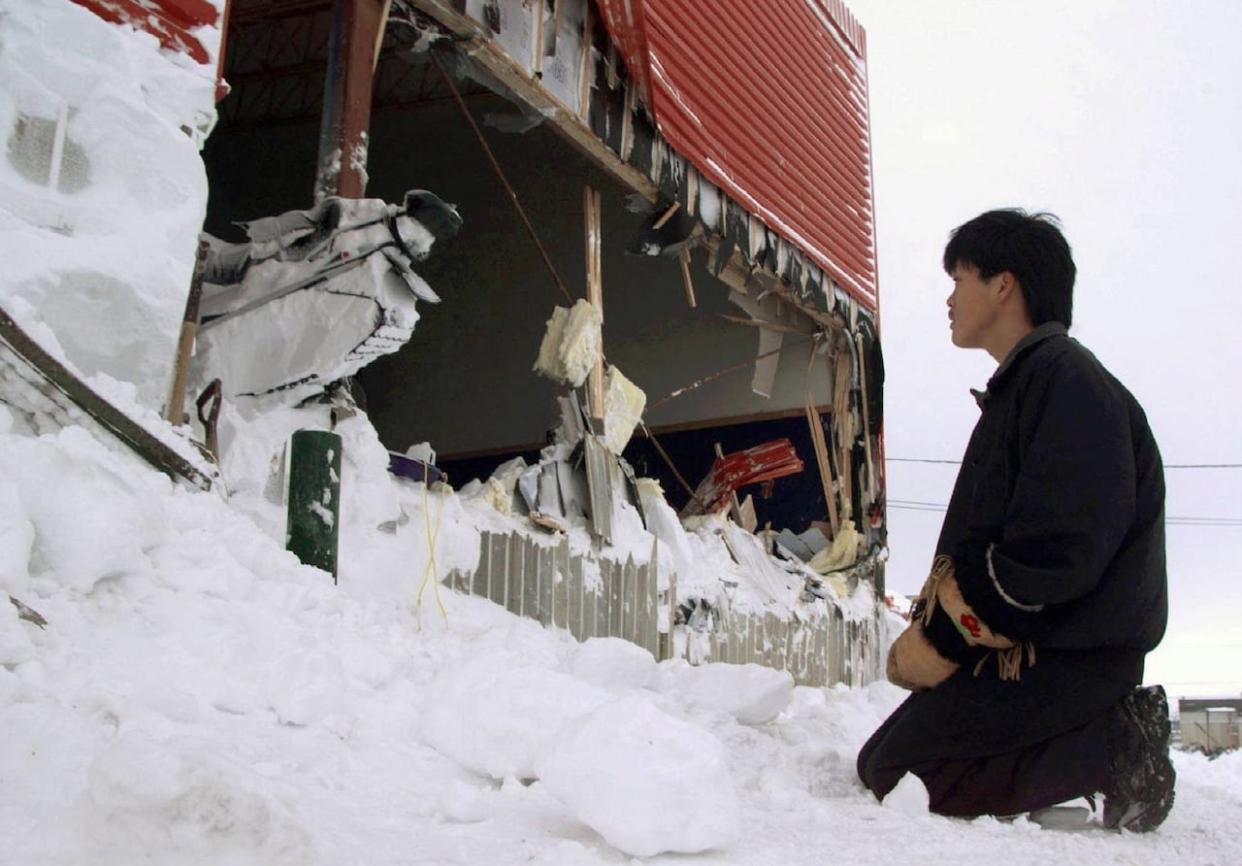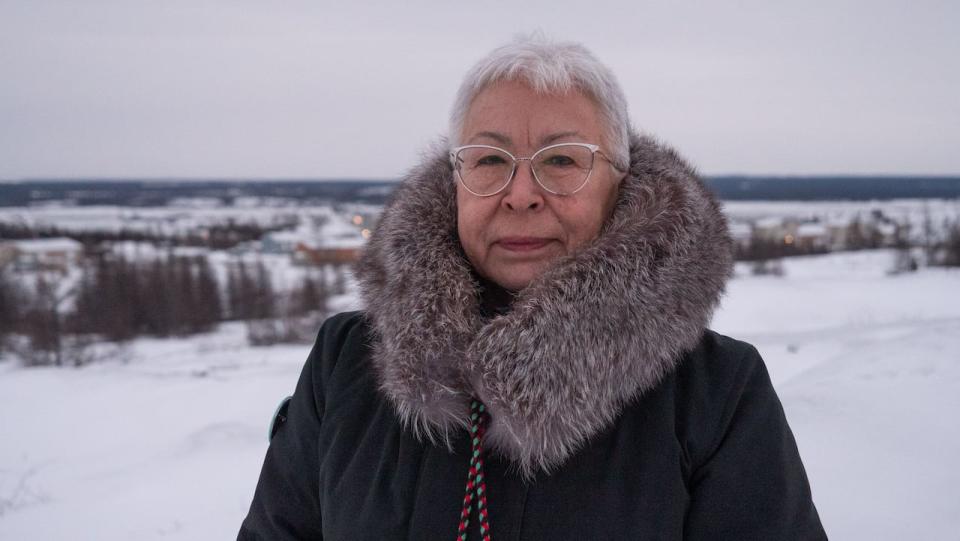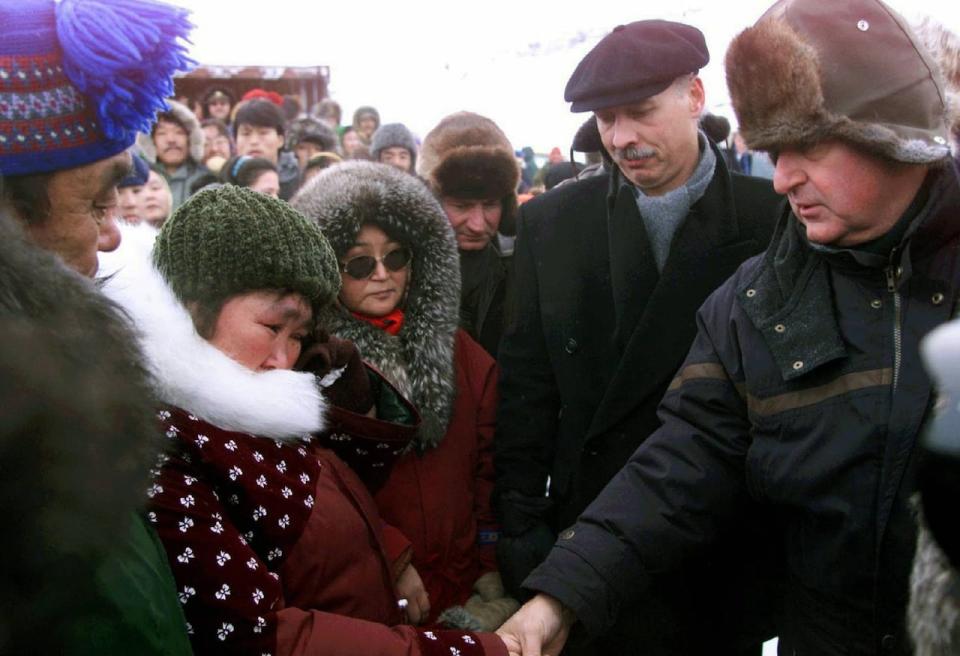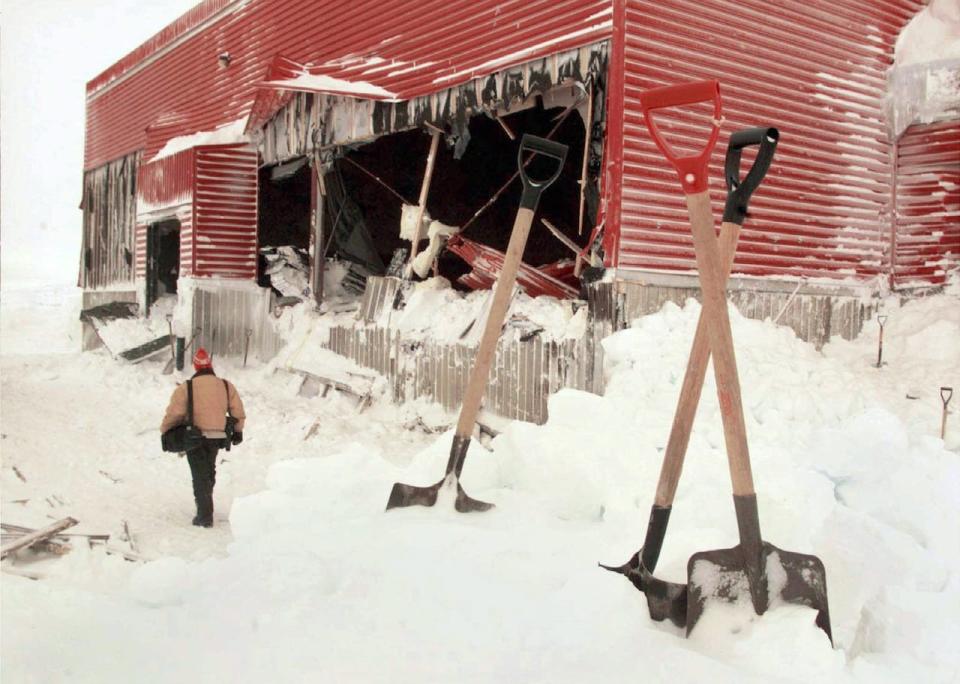25 years on, mayor of Kangiqsualujjuaq, Que., reflects on tragic legacy of avalanche that struck school

Maggie Emudluk was celebrating New Years on Jan. 1, 1999, with her family in Kangiqsualujjuaq, Que., when the unthinkable happened.
Emudluk and 400 to 500 people were gathered in the Satuumavik School gym around 1:30 a.m., square dancing to accordion music and playing traditional games to ring in the new year.
That's when an avalanche started to pummel down the mountain, just 40 metres from the school. It hit the building, destroying most of the structure where the community gathered inside.
"It happened so fast," Emudluk said.
After the avalanche hit, time seemed to stop, she remembers.
"There was a silence like, I don't know how many seconds," she said. "But then after that, I start to see people kind of coming out of the snow.
"We could hear yelling, crying, children running all over the place."
Emudluk was the community's mayor in 1999, a position she still holds today.
In the hours that followed that night, Emudluk went back and forth between the avalanche site and the health centre, a 15-minute journey on foot.
"After we brought my brother to the clinic, I said I have to go back," she said. "And then I realized I didn't have a jacket. So I borrowed the nurse's coat."
The deadliest avalanche in Quebec's history
Nine residents, including five children younger than eight, died in the avalanche. Another 25 people were injured and were medevaced to Kuujjuaq and Montreal.
To this day, it remains the deadliest avalanche in Quebec's history.
With no roads linking Nunavik to southern Quebec, combined with a blizzard, help was slow to arrive.

Minnie Grey was the director of Kuujjuaq's health centre in 1999. (Félix Lebel/Radio-Canada )
"I think it was about nine hours before we were able to get there to Kangiqsualujjuaq," said Minnie Grey, the director of Kuujjuaq's health centre at the time.
"We were getting all prepared for the worst because we would have to receive injured," Grey recalled.
Canadian Rangers were among the first to help with rescue efforts. Finally, the Sûreté du Québec, the provincial police service, deployed police officers and sniffing dogs to find people lost in the snow.
A tragedy that could have been avoided
In the days following the avalanche, then-Quebec premier Lucien Bouchard visited Kangiqsualujjuaq to pay his respects to the victims and attend their funerals. Then-prime minister Jean Chrétien followed suit.
The community's only church was within the avalanche's perimeter, so funerals took place in the municipal garage. Grey remembers having to interpret for the premier and prime minister during the proceedings.

A woman who lost a child breaks down as she shakes hands with then-Quebec premier Lucien Bouchard in Kangiqsualujjaq, Que., on Jan. 3, 1999. (Paul Chiasson/Canadian Press)
"I remember I had just learned French that time and because everything was done in Inuktitut, I was whispering what was being said in church to them in my broken French," Grey said.
The Quebec government also launched a coroner's inquest into the avalanche, led by chief coroner Jacques Bérubé.
Bérubé's report, made public in April 2000, decried the negligence around the construction and expansion of the school and the lack of identification around potentially dangerous zones in the community.
His report recommended, among other things, to identify potential avalanche sites and to establish ways to deal with potential natural disasters.
It wasn't the first time an avalanche hit the school in Kangiqsualujjuaq.
It was also hit in 1993, causing the community to question a planned expansion of the school.

Shovels line the outside of the gymnasium of the school in Kangiqsualujjaq, Que., on Jan. 2, 1999. (Paul Chiasson/Canadian Press)
In a study commissioned by the Kativik School Board in 1995, avalanche experts confirmed that the location of the school posed several risks and recommended installing snow fences on the mountain. That never happened.
Emudluk said the tragedy put a spotlight on the chronic underfunding of public safety and security in Nunavik.
"I remember the region at the time was having difficulties to try to get funding for that," she said.
Researchers estimate that the Quebec government spent around $30 million in total on its response to the avalanche and for the construction of a new school.
"It's sad to say and see, but sometimes tragedies somehow can open things up," Emudluk said.

 Yahoo News
Yahoo News 
